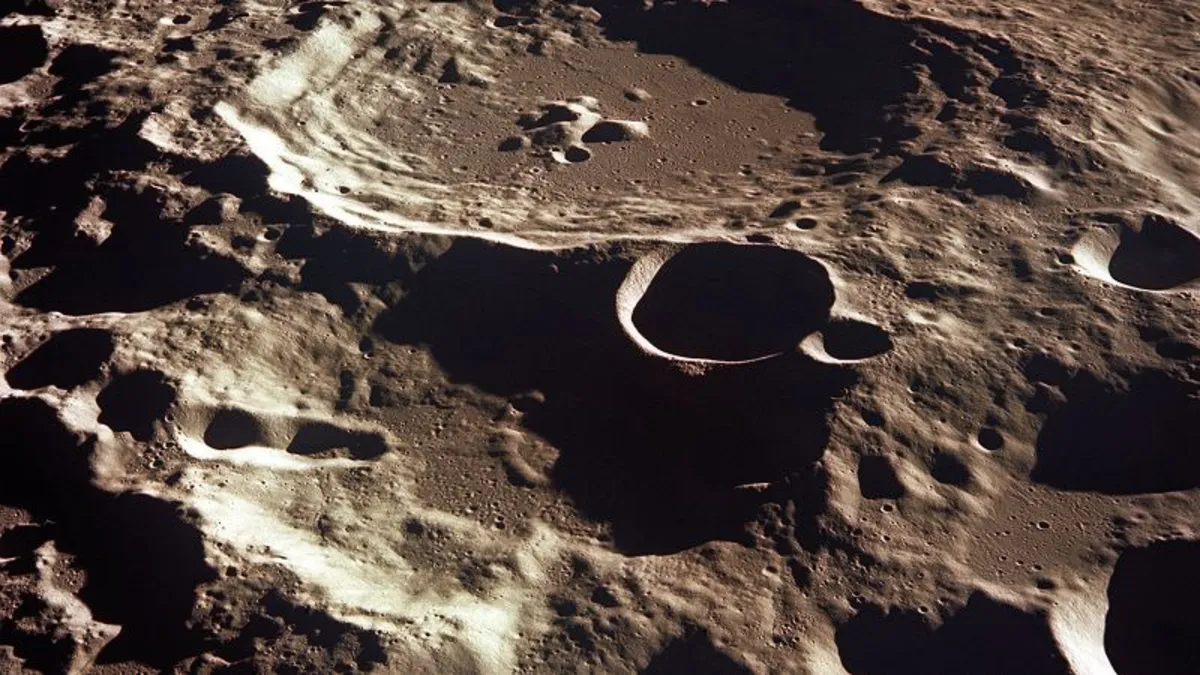
The asteroid known as 2024 YR4 has captured the attention of scientists and astronomers worldwide, despite being currently out of sight. This building-sized object, initially thought to be on a collision course with Earth, is now moving beyond the reach of telescopes as it orbits the sun. As researchers eagerly await its reappearance, they are increasingly concerned about its revised trajectory, which now suggests a potential impact with the moon.
Discovered in late 2024, asteroid 2024 YR4 initially appeared to have a chance of colliding with our planet by December 22, 2032. The likelihood of this impact fluctuated with new observations, peaking at a concerning 3.1% in February, marking it as the riskiest asteroid observed to date. Ground- and space-based telescopes played a vital role in enabling astronomers to refine the asteroid's size and orbit. Thanks to these precise measurements, researchers were able to rule out the possibility of an Earth impact.
Recent observations made in early June, prior to the asteroid disappearing from view, have significantly improved our understanding of its trajectory. According to NASA, astronomers can now predict where YR4 will be in seven years with nearly 20% greater accuracy. While the risk of a direct impact with Earth has been eliminated, there remains a concern that YR4 could collide with the moon.
An impact on the moon would constitute a once-in-a-lifetime event for humanity, but it could also send fine-grained lunar material hurtling towards Earth. Although this scenario does not pose substantial physical danger to our planet, astronauts or existing infrastructures on the lunar surface at that time could face significant risks. Likewise, satellites in orbit around Earth, crucial for navigation and communication, could be threatened by debris resulting from such an impact.
Initially, YR4 was considered a prime example of the importance of planetary defense—the practice of discovering and tracking asteroids that could potentially collide with Earth. However, this asteroid is now broadening the scope of this research to include monitoring objects that may be headed for the moon. “We’re starting to realize that maybe we need to extend that shield a little bit further,” stated Dr. Paul Wiegert, a professor of astronomy and physics at the University of Western Ontario. “Our vision is hopefully expanding to encompass that.”
Despite appearing as merely a speck of light through even the most powerful telescopes, asteroid 2024 YR4 is estimated to be about 60 meters (approximately 200 feet) in diameter, according to March observations by the James Webb Space Telescope. “Size equals energy,” noted Julien de Wit, associate professor of planetary sciences at MIT, who observed YR4 with the Webb telescope. “Knowing YR4’s size helped us understand how big of an explosion it could be.”
While astronomers have already identified most near-Earth asteroids classified as “planet killers”—those larger than 1 kilometer (0.6 miles) that could cause catastrophic destruction—smaller asteroids like YR4, termed “city killers,” could still lead to regional devastation. Current data reveals that around 40% of near-Earth asteroids larger than 140 meters (460 feet) but smaller than a kilometer have yet to be identified.
As of June 3, the chances of a YR4 lunar impact were estimated at 4.3%. These odds, while small, are significant enough for scientists to consider the implications of such an event. Initial calculations suggest that if YR4 were to collide with the moon, the impact would most likely occur on the near side—the side visible from Earth. Such a collision could create a bright flash visible for several seconds, along with an impact crater approximately 1 kilometer wide (0.6 miles), akin to Meteor Crater in Arizona.
This event would mark the largest impact on the moon in over 5,000 years, potentially releasing up to 108 kilograms (238 pounds) of lunar rocks and dust. The lack of atmosphere on the moon means that debris from such an event could be widely scattered across its surface, posing risks to any future astronauts or structures on the lunar surface.
Particles ranging from 0.1 to 10 millimeters in size could reach Earth within days to months post-impact, leading to a spectacular meteor shower. Wiegert reassured that there’s no danger to individuals on Earth, as the atmosphere would protect us from larger debris. However, any pieces capable of damaging satellites could pose risks to our vital space infrastructure.
According to Wiegert, hundreds to thousands of impacts from millimeter-sized debris could threaten Earth’s satellite fleet, potentially exposing them to the equivalent of up to ten years of meteor debris within just a few days. This could disrupt communications, navigation, and other essential services that modern society relies on.
Scientists and astronomers are actively exploring the potential scenarios surrounding a YR4 impact, particularly as they could not rule out a lunar collision before the asteroid’s recent disappearance. A planetary defense plan would likely be more straightforward if the asteroid were on a direct path toward Earth. Rivkin, who led the successful NASA DART mission that tested asteroid deflection technology, noted that similar techniques could be considered for YR4 if future assessments indicate a risk.
As we continue to track 2024 YR4, the importance of monitoring both Earth-bound and moon-bound asteroids has never been clearer. With advancements in technology and upcoming telescopes like NASA’s NEO Surveyor, researchers expect to better detect and analyze these celestial bodies, ultimately enhancing our planetary defense capabilities.
In conclusion, the journey of asteroid 2024 YR4 highlights the significance of ongoing research in planetary defense and the necessity to broaden our focus beyond Earth to include the moon. As we learn more about such asteroids, we become better equipped to address potential threats and protect both our planet and the lunar surface.